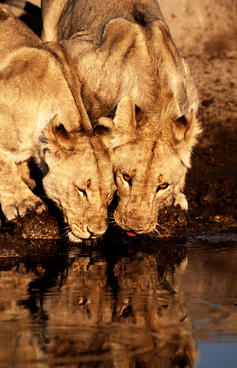Namibia probably isn’t the first place you’d point to as a model for combining economic benefits with wildlife conservation, but maybe it should be.
This relatively new nation, which became independent in 1990, is the first African country to incorporate environmental protection into its constitution.
Since then, it’s become home to 79 registered conservancies that cover 38 million acres, says the World Wildlife Fund (WWF).
"By the mid-1990s — shortly after Namibia won its independence — wildlife numbers were at historical lows in many communal areas," says Chris Weaver, managing director for WWF Namibia. "But since passage of 1996 communal conservancy legislation, the recovery of the wildlife has been amazing. We now have the largest free-roaming population of black rhino, the only expanding population of lions, and the biggest cheetah population in the world. Elephants are recovering and enlarging their range, while migration routes for many animals are being re-established.
Pretty amazing to turn the situation around in just two decades. It shows the resilience of wildlife if the government has good policy. That policy has been instrumental in shaping its citizens’ approach to conservation, says Weaver.
"This remarkable transition has all been possible due to Namibia’s visionary government, which recognized the importance of engaging communities in conservation. The government teamed up with multiple non-governmental organizations, including WWF, to create a national community-based natural resource management program. We jointly assist communities in forming conservation areas to manage and benefit from their wildlife. Once a community meets legal criteria, it becomes a legitimate natural resource management organization registered and recognized by all branches of government in Namibia as a communal conservancy."

One example is the Puros Conservancy in northwest Namibia. In the 1990s, the community there had a very simple approach to lions: shot them on sight.
It been exciting to watch the transformation in how people value wildlife in Namibia, Weaver says. They were once perceived as a detriment to peoples’ livelihoods and poached for meat, but now they are seen as a valuable asset that attracts tourists. "One can see peoples’ mindsets incrementally shift; they start to think that wildlife is worth something and that it should be conserved and protected."
20 countries have sent delegations there to learn from its success, says Weaver.
